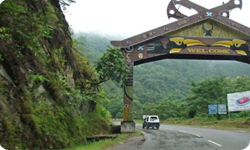Economy Of Nagaland

Cultivation of bamboo is carried on a large sale in Nagaland whose bamboo growing stock account for 5 per cent of the total stock in India. During the 12th Five-Year Plan, which is valid from 2012 to 2017, the state plans to increase its raw silk production from 619 MT in 2014-15 to 1,700 MT by 2017.
Fauna and flora

Nagaland is home to 650 indigenous species of aromatic and medicinal plants. In 2014-15, the state produced 623.40 MT of honey. Its production is expected to reach 1,000 MT by the end of the 12th Five Year Plan period.
Agriculture

Agriculture is and will continue to be the mainstay of Nagaland’s economy. According to the estimates the state is expected to enhance its annual agricultural production by 7-8 times by 2025. The current contribution of agriculture sector to the state’s Gross Domestic Product (GDP) is 20 per cent and expected to reach 28 per cent by 2025. About 71 per cent of the state’s population is engaged in agriculture sector.
The gross state domestic product (GSDP) of Nagaland at current prices was about US$ 3.33 billion in 2014-15. Between 2004-05 and 2014-15, the state’s GSDP rose at a compound annual growth rate (CAGR) of about 9.88 per cent. At current prices, the state’s net state domestic product (NSDP) was around US$ 3.06 billion in 2014-15. Its NSDP rose at a CAGR of around 9.74 per cent between 2004-05 and 2014-15.
Nagaland’s Per capita GSDP, which increased at a CAGR of 8.04 per cent between 2004-05 and 2014-15, stood at US$ 1,585 in 2014-15. The tertiary sector, which grew at a CAGR of 11.38 per cent between 2004-05 and 2014-15, is one of the fastest growing segments in Nagaland. Trade, banking, real estate, insurance, communications and transport are the growth drivers for the tertiary sector.
The primary and secondary sectors grew at a CAGR of 10.85 and 6.67 per cent from 2004-05 to 2014-15. In 2014-15, while the contribution of the tertiary sector to the state’s GSDP stood at 60.1 per cent, those of primary and secondary sectors were 25.9 and 14 per cents.